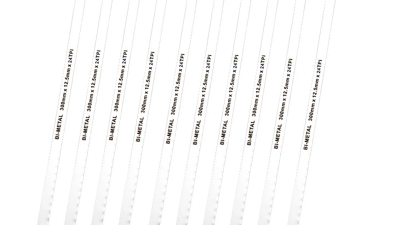How to Choose the Right Hacksaw Blades for Optimal Cutting Performance in Toolstation Projects
Table of Contents
- Understanding Different Materials: Steel, Aluminum, and Plastics
- Blade Composition: The Importance of Carbon, Bi-Metal, and High-Speed Steel
- Tooth Count and Pitch: Matching the Right Blade to Material Thickness
- Length and Width Considerations for Toolstation Hacksaw Blades
- Selecting Blade Coatings for Enhanced Durability and Cutting Efficiency
- User Preferences: Personalization in Blade Selection for Specific Projects
- Maximize Cutting Efficiency: A Comprehensive Guide to Using EC18T-12IN BI-METAL Hacksaw Blades for Metal Fabrication
- FAQS
- Conclusion
- Related Posts
When you’re kicking off a project with Toolstation, picking the right hacksaw blades really matters if you want your cuts to turn out neat and clean. I’ve seen reports that say the worldwide hand tools market could hit around around $55 billion by 2027 — no joke! There’s a pretty big appetite for top-notch cutting tools like hacksaw blades. Wenzhou Yichuan Tools Co., Ltd., started back in 2003, has really become a leader in this field. They focus on making high-quality electric tool accessories, from jigsaw blades to reciprocating saw blades and planers. Their products are designed to meet the needs of both pros and serious weekend warriors alike. In this quick guide, I’ll walk you through the key things to think about when choosing hacksaw blades at Toolstation, so you can pick what’s best for your next project without any second-guessing.
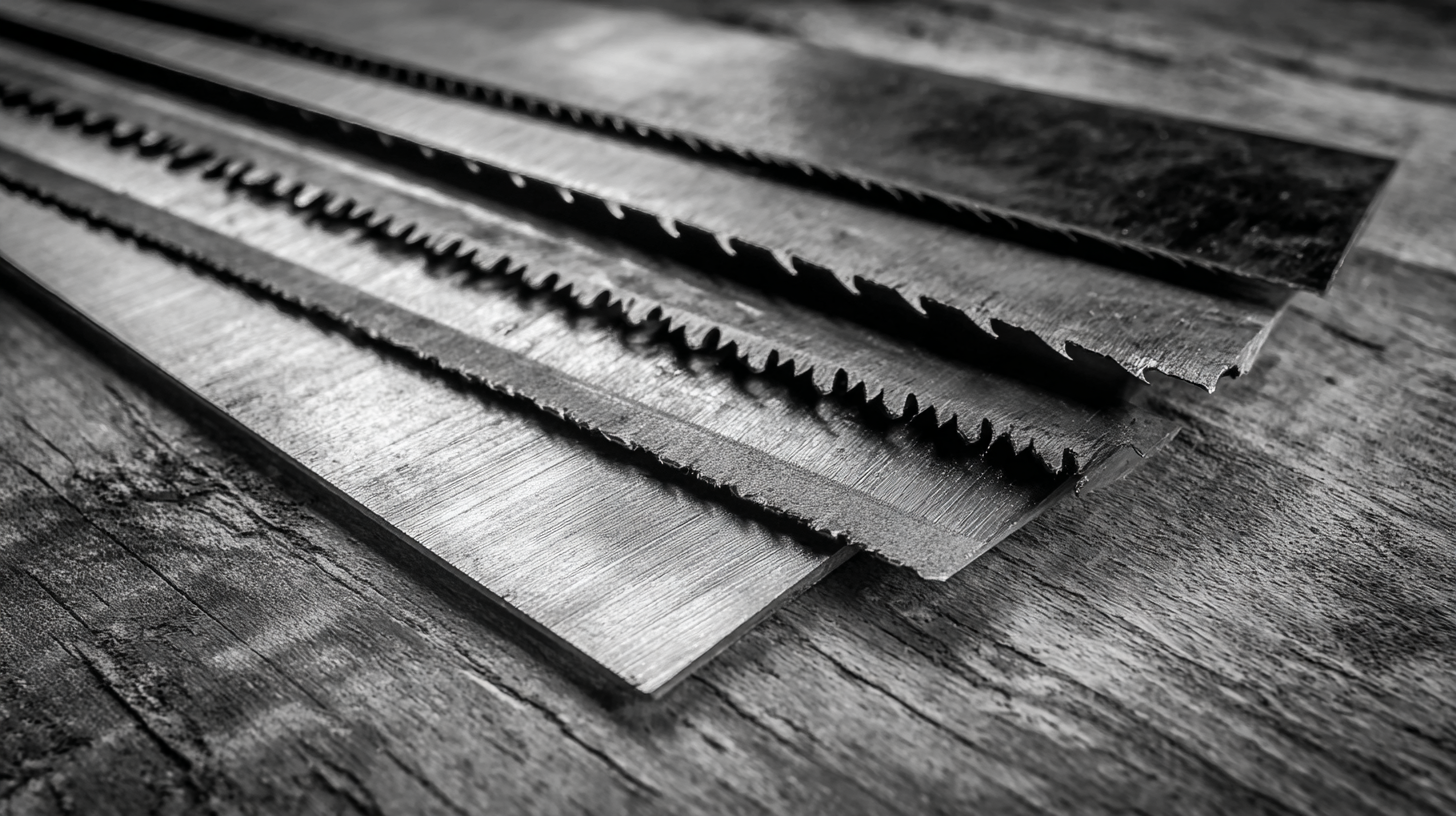
Understanding Different Materials: Steel, Aluminum, and Plastics
When you're picking out the right hacksaw blades for your Toolstation projects, it’s pretty important to understand what kind of materials you’ll be cutting. Steel, aluminum, and plastics all have their own quirks, and that can really affect how well the blade cuts. For example, steel — you know, the tough stuff — needs a blade with a finer tooth count, usually something like 14 to 24 teeth per inch (that’s TPI). That kind of setup helps prevent the blade from getting stuck or binding in the material and makes for a smoother cut. A lot of folks recommend high-speed steel (HSS) blades too, since they stay sharp longer and can handle the heat that comes with cutting through metal.
Then, there's aluminum, which is way softer and lighter. You’d want a blade with fewer teeth, probably around 8 to 12 TPI. That way, you can cut faster without clogging up the blade with shavings — it’s just more efficient. Plus, blades made specifically for non-ferrous stuff like aluminum often have a special tooth shape, so slicing through aluminum feels much smoother.
And don’t forget plastic! The right blade’s pretty crucial here, too. A fine-toothed blade really helps avoid chipping and melting — trust me, nobody wants a messed-up plastic piece. Picking the right hacksaw blade based on what you’re cutting not only makes the job easier but also helps your tools last longer. It’s all about matching the blade to the material — simple but effective.
How to Choose the Right Hacksaw Blades for Optimal Cutting Performance in Toolstation Projects
| Material | Blade Type | Teeth per Inch (TPI) | Best Use |
|---|---|---|---|
| Steel | High-Speed Steel (HSS) | 14-24 TPI | General cutting |
| Aluminum | Bi-metal | 10-18 TPI | Non-ferrous cutting |
| Plastics | Plastic Cutting Blade | 18-32 TPI | Precision cutting |
| Steel | Carbon Steel | 18-24 TPI | Regular duty cutting |
| Aluminum | Fine-Tooth Blade | 14-24 TPI | Fine detailing |
Blade Composition: The Importance of Carbon, Bi-Metal, and High-Speed Steel
When you're choosing the right hacksaw blades for your Toolstation projects, it’s pretty important to get a good handle on what the blades are made of. There are mainly three types—carbon steel, bi-metal, and high-speed steel—and each has its own perks, depending on what you’re cutting.
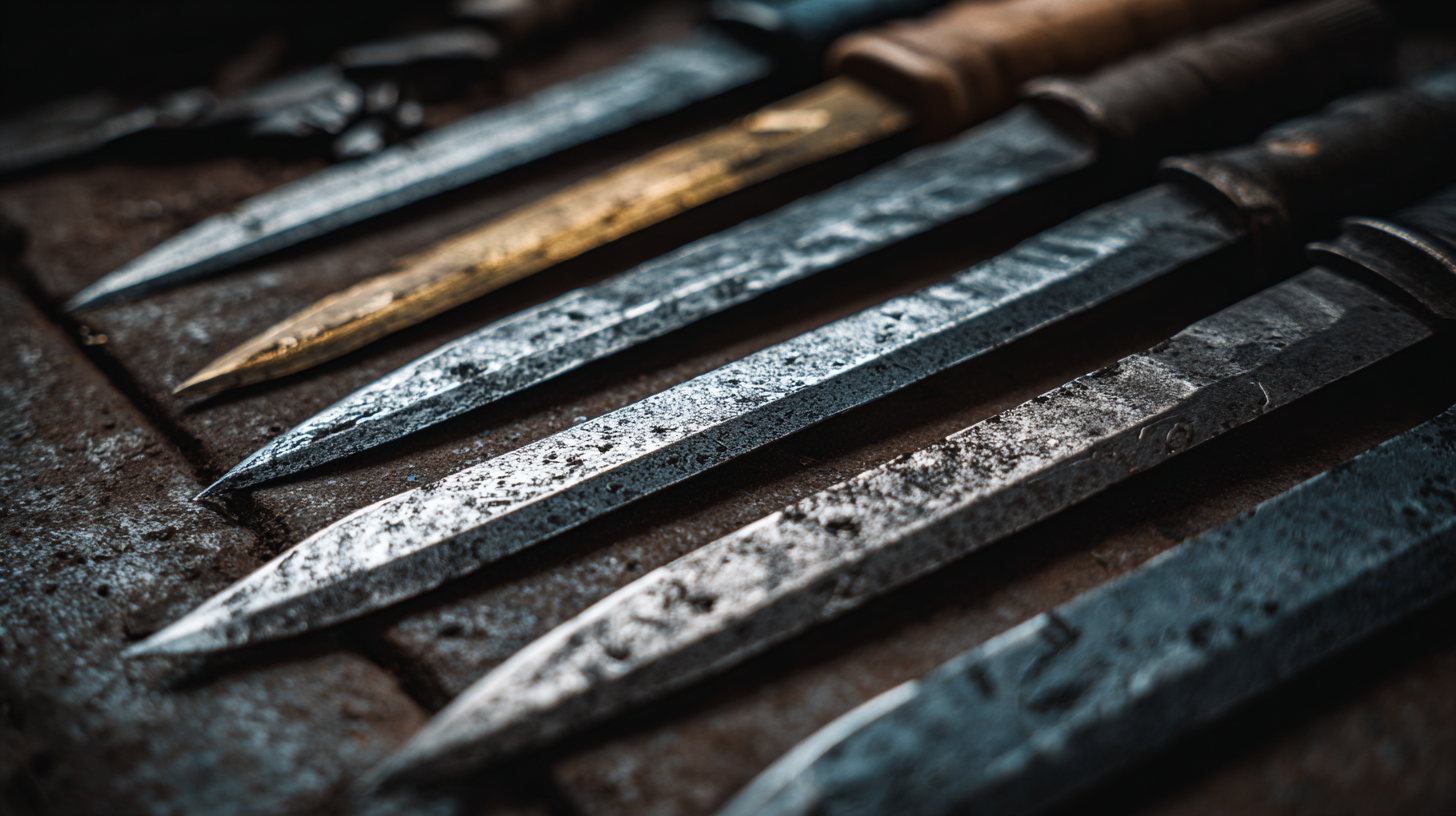 Carbon steel blades are usually the budget-friendly option and are pretty easy to sharpen, so they’re great if you're working with softer metals or plastics. Just a heads up though—they don’t last as long when it comes to tougher materials.
Carbon steel blades are usually the budget-friendly option and are pretty easy to sharpen, so they’re great if you're working with softer metals or plastics. Just a heads up though—they don’t last as long when it comes to tougher materials.
Bi-metal blades are kinda like the best of both worlds; they have a tough high-speed steel cutting edge on a flexible carbon steel body. That means they’re less likely to snap and can handle a range of materials, from wood to tougher metals, making them perfect if you’re doing more demanding work.
Then there are high-speed steel blades, which are your go-to for slicing through hard metals. They’re built to handle higher temperatures without losing their sharpness. Sure, they’re a bit pricier, but they last longer and cut more efficiently, so they’re definitely worth considering if you’re dealing with heavy-duty projects.
All in all, understanding what makes each type of blade special helps you pick the right one for your specific needs. That way, you get the best performance and your tools will last longer—nice, right?
Tooth Count and Pitch: Matching the Right Blade to Material Thickness
When you're choosing hacksaw blades for your Toolstation projects, it’s super important to get a grip on tooth count and pitch. Basically, tooth count is how many teeth the blade has per inch, and that really affects how quickly and smoothly you can cut. For softer materials, a blade with fewer teeth (what we call a coarser pitch) is your go-to—it bites through faster because it takes bigger chunks with each stroke. But if you’re working with harder or thinner stuff, then a blade with more teeth (a finer pitch) is better since it gives a cleaner, smoother cut and minimizes the risk of messing up your material.
Getting the tooth pitch right for the material you’re cutting is kinda key. Usually, if the material is up to about 1/8 inch thick, a blade with somewhere between 18 and 32 teeth works well— easy to cut through and leaves a nice finish. If it’s thicker—say over 1/8 inch but less than 1/4 inch—going for something in the 14-24 teeth range strikes a good balance between speed and a clean cut. And for metals or really thick stuff, blades with 8-14 teeth are your best bet—they last longer and cut more efficiently.
So, by paying attention to the tooth count and pitch based on what material you’re working with, you’ll get much better results, making your cuts cleaner, faster, and more precise. Trust me, a little prep here goes a long way!
Hacksaw Blade Tooth Count and Optimal Material Thickness
Length and Width Considerations for Toolstation Hacksaw Blades
When you're picking out hacksaw blades for your Toolstation projects, yeah, length and width are pretty much the key players that can really change how well you cut. Most blades tend to be around 10 to 12 inches long, but it’s super important to pick one that fits your saw frame just right. A longer blade can handle deeper cuts and tougher materials, while a shorter one is way more nimble, perfect for getting into tighter spaces.
And don’t forget about the width—it totally matters too. Usually, blades come in around 1/2 inch to 1 inch wide. If you’re tackling bigger cuts or harder stuff, a wider blade will give you more stability and make your life easier. But if precision is what you need—say, those intricate, delicate cuts—a narrower blade will do the trick better.
Quick Tip: Always double-check that the blade is compatible with your specific hacksaw frame before buying. If you want your cuts to be smoother and last longer, go for bi-metal blades—they’re tougher and more flexible. And if you think you’ll be working with all kinds of different materials, it’s not a bad idea to keep a few different widths around. That way, you’re ready for whatever project comes your way, and your cuts will be spot-on every time.
Selecting Blade Coatings for Enhanced Durability and Cutting Efficiency
When you're picking out hacksaw blades for the best cutting performance, one of the big deals is definitely the type of coating on the blade. Coated blades tend to hold up way better against wear and tear, so they last longer—especially if you're working on tough projects at the toolstation. Common coatings like bi-metal, titanium, or chromium help the blade resist heat and friction, which means you can get cleaner cuts and won’t need to replace your blade as often.
And it’s not just about the material—what’s actually coating the blade can really impact how well it performs. For example, titanium coatings do a lot more than just toughen up the blade; they also help make cutting smoother, which is a lifesaver when you're dealing with denser materials. Plus, with the global carbide tools market expected to grow pretty significantly—forecasted to hit around $18.41 billion by 2032—it makes total sense for pros and DIY folks alike to invest in high-quality coated hacksaw blades. It’s all about getting reliable results and making sure your cuts are clean and precise every time.
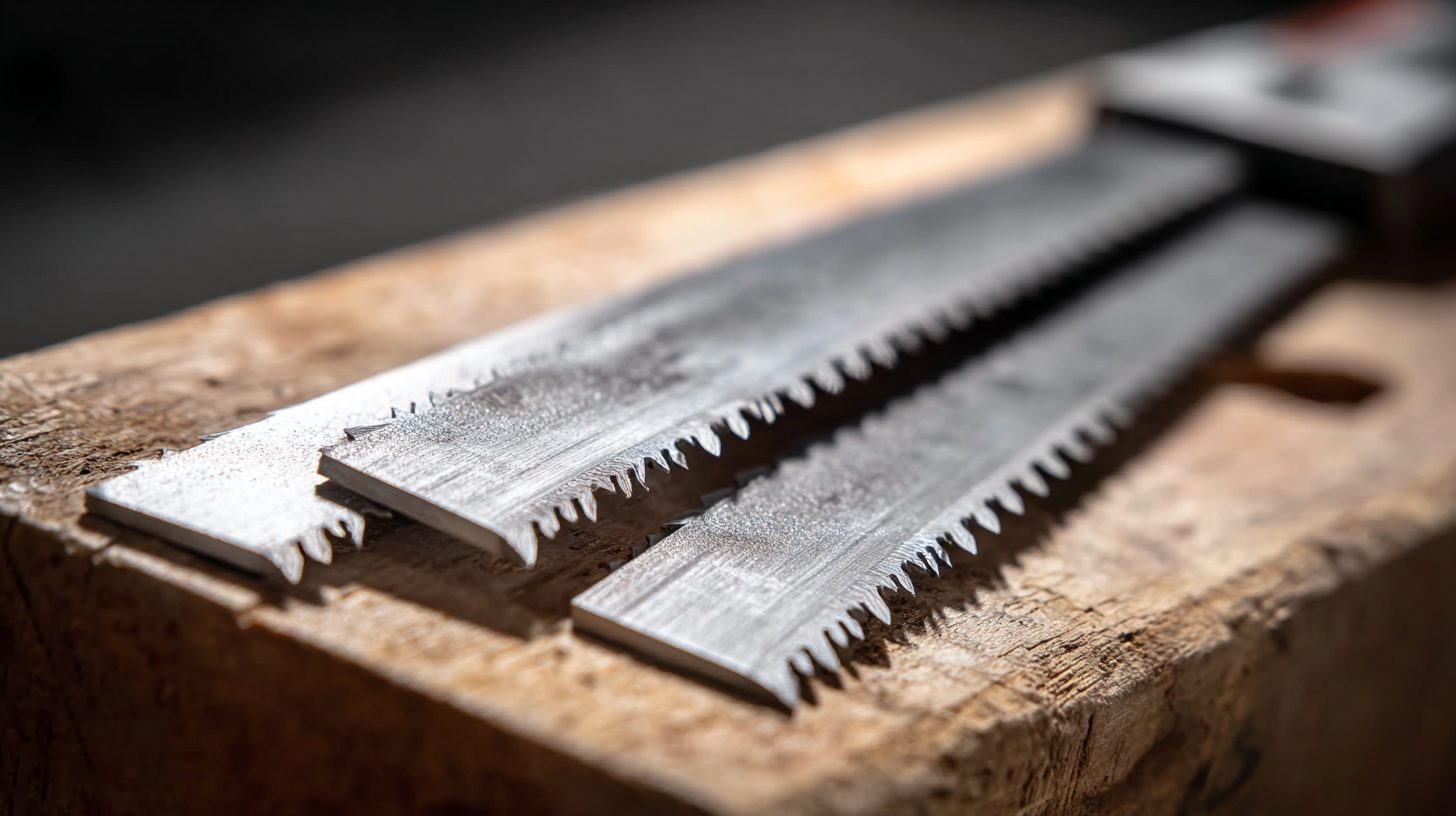
User Preferences: Personalization in Blade Selection for Specific Projects
Picking the right hacksaw blade really makes a big difference when you're working on your Toolstation projects. Honestly, personalizing your choice based on what you actually need can make your life so much easier—and the results way better. Whether you're cutting through metal, plastic, or wood, knowing what the project demands will help you pick the perfect blade.
**Some tips for customizing your selection:** First off, think about what material you're working with. For metal, you’ll want blades with finer teeth, like 24 TPI (teeth per inch), for those smoother cuts. If you're dealing with thicker stuff, coarser blades usually do the trick. Next, pay attention to how thick the material is—thicker pieces need tougher blades that can handle more stress without breaking. Lastly, consider how precise you need to be. For really detailed, intricate cuts, a blade with a flexible frame might be just what you need because it can handle tighter curves without fussing.
When you pick your blade based on these details, you’ll find your cuts come out cleaner, and the whole process feels smoother and more enjoyable. Trust me, it’s worth taking a little extra time to choose the right one—your project will thank you for it!
Maximize Cutting Efficiency: A Comprehensive Guide to Using EC18T-12IN BI-METAL Hacksaw Blades for Metal Fabrication
When it comes to metal fabrication, maximizing cutting efficiency is crucial to achieving precise results and enhancing productivity. One of the best tools for this task is a hacksaw, specifically equipped with high-quality EC18T-12IN BI-METAL hacksaw blades. These blades are designed to handle the demands of cutting through various metals, providing a clean and accurate cut while ensuring long-lasting durability.
The EC18T-12IN BI-METAL blades leverage a unique blend of materials, combining the flexibility of high-speed steel with the toughness of carbon steel. This design allows for optimal performance in metal cutting, as it reduces breakage and increases the blade's lifespan. Furthermore, the fine-toothed nature of these blades ensures a smoother finish, making them ideal for detailed fabrication work where precision is paramount. By choosing the right blades, fabricators can significantly reduce the time spent on cutting tasks, allowing for more time to focus on assembly and other critical aspects of the project.
In addition to their impressive cutting capabilities, the EC18T-12IN BI-METAL hacksaw blades are compatible with a variety of hacksaw frames, enabling versatility in different work environments. Whether you're tackling thick steel or intricate metal components, these blades provide the necessary performance to meet diverse cutting needs. Investing in high-quality hacksaw blades is essential for any metal fabrication professional looking to optimize their workflow and enhance the overall quality of their work.
FAQS
: Tooth count refers to the number of teeth per inch on the blade, which influences cutting speed and finish.
A blade with fewer teeth (coarser pitch) allows for faster cuts in softer materials, while a blade with more teeth (finer pitch) provides smoother cuts in harder or thinner materials.
For materials up to 1/8 inch thick, a blade with 18-32 teeth is suitable for quick and clean cuts.
Coated blades enhance durability, resist heat and friction, and provide cleaner cuts, significantly extending the blade's lifespan.
For materials thicker than 1/8 inch but less than 1/4 inch, a blade with 14-24 teeth is ideal, while blades with 8-14 teeth are best for metal or thicker materials.
Personalizing blade selection based on the material type, thickness, and precision required for a project can enhance cutting efficiency and overall results.
Matching the blade’s tooth pitch to the material thickness ensures efficient cutting performance and reduces the risk of damaging the material.
Coatings like titanium and chromium enhance blade hardness, reduce wear, and contribute to smoother cutting actions, making them suitable for dense materials.
A blade with a flexible frame can navigate tighter curves, making it ideal for projects requiring intricate designs.
For metalwork, opting for blades with finer teeth, such as 24 TPI, ensures smooth cuts and better performance.
Conclusion
Picking the right hacksaw blades is pretty important if you want your Toolstation projects to turn out well. It helps to understand the different materials—like steel, aluminum, and plastics—so you can choose the right blade, whether it's carbon, bi-metal, or high-speed steel. That way, you get better durability and efficiency. Oh, and don’t forget about the tooth count and pitch—that’ll make sure you’re matching the blade to the material’s thickness. Also, pay attention to the length and width; these are key for making sure the blade fits your hacksaw properly.
Another thing to keep in mind is the blade coating—picking the right one can really boost cutting performance and make the blade last longer. Whether you're a pro or just doing some DIY, customizing your blade choice based on your preferences can make a big difference. At Wenzhou Yichuan Tools Co., Ltd., we’re dedicated to offering high-quality blades that cater to all kinds of needs. We want to help you get the best out of your hacksaw blades, no matter what project you’re tackling!
Related Posts
-
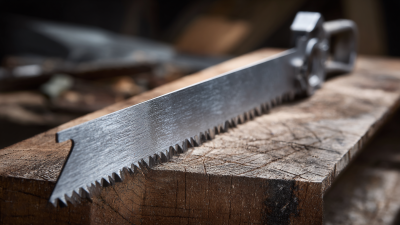
7 Best Hacksaw Blades for PVC You Need to Know
-

Unmatched Quality Hacksaw Blades: Crafted in China for a Global Market
-

Navigating the 2025 Landscape: Innovations in Best Hacksaw Blade Double Sided Technology
-
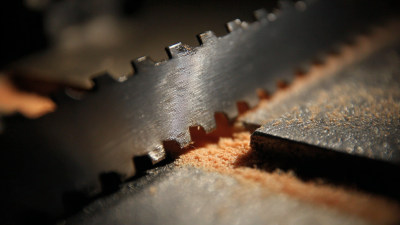
7 Best High Speed Hacksaw Blades for Efficient Cutting
-
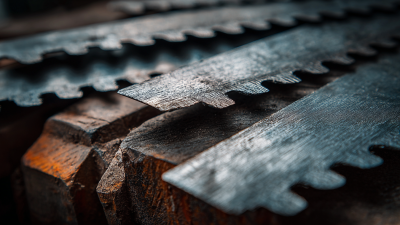
Understanding the Common Challenges with 12 Inch Hacksaw Blades in Global Supply Chains
-

Navigating Import Export Certifications for Best Sabre Saw Blades in Global Markets
Blog Tags:






